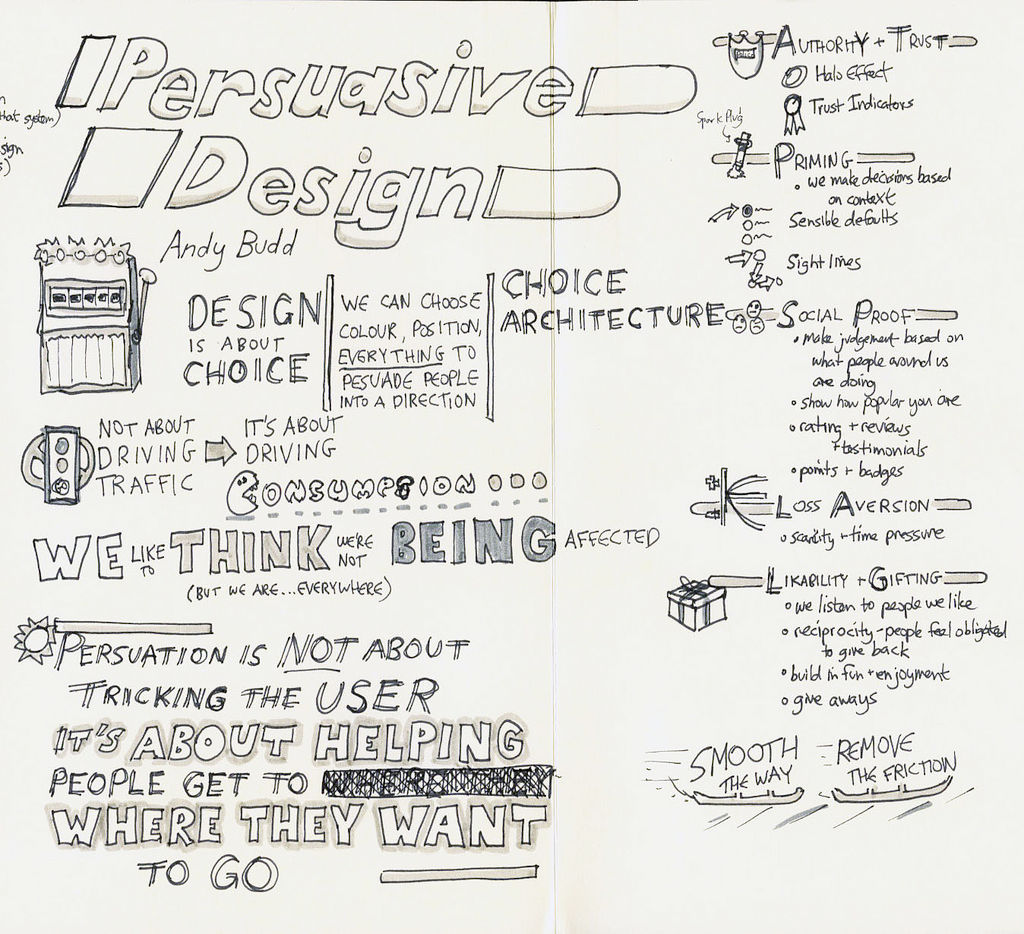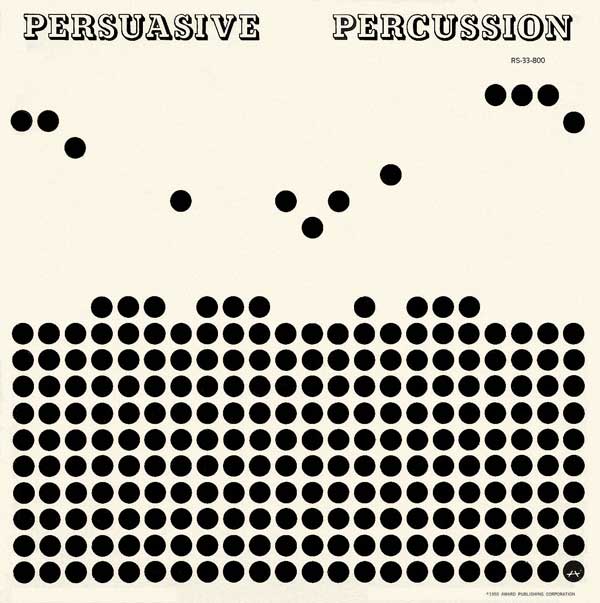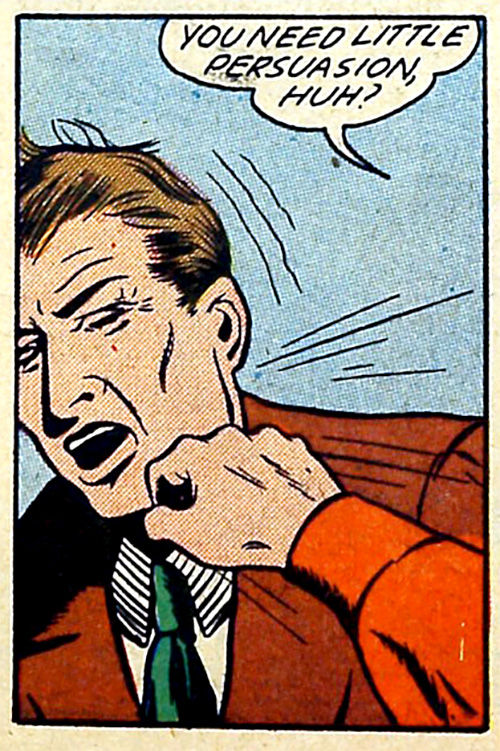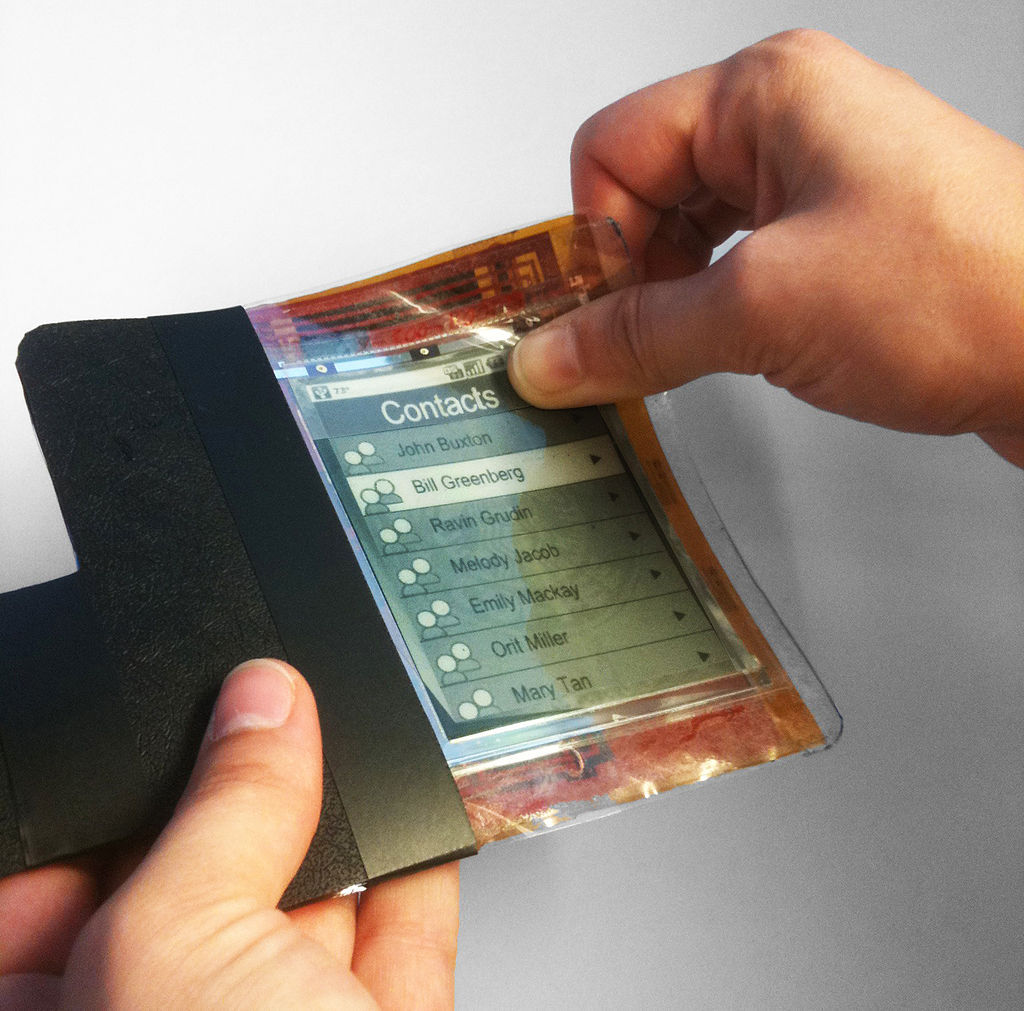The Necessary Art of Persuasion Knowing When to Pull the Plug
Persuasion is a powerful force that changes the attitudes and behaviors of others. Information technology's all about influence and manifests itself in many aspects of everyday life. People can persuade themselves, likewise. Persuasion'south most straight portrayals may show upwards in such places as courtrooms, political debates, and car showrooms, but many trades rely on persuasion, also UX design. Nosotros tin split the art of persuading a user into many components; following them in order—the process—can lay a strong foundation to winning over users.
The Principal Components of Persuasion
Persuasion is virtually increasing engagement between two parties; the fine art or act of persuasion involves four parts:
- The source – the persuader who wants to win something sought.
- The goal – the goal is winning over the user. All persuasion is goal-oriented.
- The medium – these are messages, which the persuader directs at the audience.
- The audition – the users who can help the persuader achieve his/her goal/due south (i.e., the users who see the design, in our case).

The source is the company, merely specifically, you the designer. The relationship you desire to establish with the user is a long-term one.
In a crude form of user persuasion, nosotros can envision a seller who has a "miracle hair tonic" in the one-time Wild West. Going from town to boondocks, he captivates audiences, alerting the balding men in the community to the bespeak that his 'miracle tonic' can restore hair follicles for them (the goal). The seller delivers his message to an audition. He sells a few bottles; come up the morn, he has disappeared. Three days subsequently (when he had told the customers that the first hairs should be appearing), he is safely far away, trying the same thing in the next boondocks, hoping that no one from the other towns has followed him to show others his sugared rosewater!
The Recipe for Persuasive Design – Some principles of Social Influence
- Exist Likeable!
- Give them something for nothing
- Get them to show delivery.
- Social Proof
- Authority
- Scarcity
Establishing a foothold in the process of persuasion means establishing a friendly, trustworthy presence. Your users are meeting yous through your pattern, so it'due south vital to show that you're a trustworthy visitor so that they can like you lot.
Crossing the great separate between y'all and the user—the medium of the Internet—means creating an impression with a strong, likeable presence. If you have a friendly presence that is attractive and user-friendly (i.e., users can navigate hands and intuitively around your simple, pleasing blueprint), you'll have a far better chance of engaging them and removing uncertainty. If they don't have to ask themselves whatsoever questions about yous or what you want them to do, you will have got ane pace ahead of them in the persuasion process.

© murdocke23, CC BY-NC-SA ii.
The more people like someone, the more than they will say "yep" to that person. It's a universal truth. As well, people are more than likely to practise things that people they similar exercise. Facebook'south 'thumbs up' sign is a powerful example of this tendency, and information technology's a bang-up way of identifying what people in social groups like. Tin your company access users in special interest groups? Does it accept the resources to access them through a blog or page, for example, that has a friendly face that can appeal to them and win their trust (and "Likes"!)?
Past edifice a strong client-centric identity into your pattern that matches the user'due south sense of cocky, y'all can bring users on "your side". They will identify with you…and they will trust you; hence, y'all'll be more than likely to persuade them to stay and do what you lot want them to achieve in your design.
Giving users a freebie or a free sample is a great manner to persuade them to practice more than. Author and psychologist Roger Cialdani showed that users will exist more probable to commit to an action, such equally a purchase, if they feel that they've got something first.
Think of Amazon.com and the book and music previews it offers for free. Users accessing these free samples whet their appetites from reading or listening to pieces of something they are considering buying. If you can include free samples of goods or services your visitor offers in your user experience design, you'll aid to instill a pocket-sized slice of "friendly obligation" in users. Information technology helps if you reinforce your trustworthiness by declaring that buyers can return appurtenances or receive refunds if dissatisfied, "no questions asked".
For case, allow'due south say that your company offers resume writing services. You lot may include a design feature that gives prospective customers a gratuitous section of a treated resume if they enter a few details. For example, John Smithson puts in his name, profession ("fictitious volunteer"), years in almost recent job (fictitious volunteer) and major achievements (appearing to exist very successful as a fictitious volunteer in many industries). Your company has software to compose that into a highly constructive (and persuasive!) certificate in the space of a few clicks. John is impressed by this and wants the full service. He's more probable to buy information technology now.
The information age has fabricated showing opinions all too easy. A simple "Similar" click on a globe issue or a production tells a lot of about people. UX designers can tap this resources by knowing that their users will exist more likely to back up a service, product, or belief if others tin can see that they have an stance about information technology, or if they take already started on the process of acquiring something (such as, for example, filling out an awarding for a college course). Cialdani discovered that people will more likely commit to buy if they take already committed to do and then in some smaller measure. This could manifest itself by their clicking a shopping cart push, for instance. Afterward, they might click to review their items earlier going to the checkout.
Does your company have the resources to run a weblog? If so, information technology's a good way to get users talking and responding. A carefully written piece can "provoke" users to leave comments that other users may see and answer to. Because people by and large similar to stand up for their behavior and do what they say, users will be more than inclined to land why they think or experience the style they do nigh a topic you have raised.
This is doubly beneficial because not only does information technology mean that you accept got them talking and committing to feedback, but y'all can also learn valuable insights from the comments they leave.

© Will, CC BY 2.0
As much every bit people may endeavor to deny it, the herd instinct is there. If you've shopped on Amazon, for instance, have you noticed the "People who bought this item likewise bought" or "Frequently bought together" features?
In that location is strength in numbers, and if users can come across the proof of a following placed side by side to an particular they are because to buy, they'll be more than probable to do it. There's something nigh seeing that "2 million customers" have been there earlier them that is wonderfully reassuring!
Twitter embraces this principle to swell effect with their "Trending" feature. Amazon's "Best Seller" feature is another instance of showcasing "hot items". Can you frame and present your company's offerings in a similar way?
The fine art of persuasion relies heavily on the identity of the persuader. Stanford Persuasive Applied science Lab, founded past B.J. Fogg, a renowned scientist who created a new model of human behavior change, have adamant guidelines (from scientific research with over 4,500 people) for designing with credibility.
The key ingredient in keeping your users on lath is keeping their trust. And so, you should prove the expertise in your company through the content in your design, which must be neat, pleasingly designed, rubber and secure, and costless of errors.
Sometimes, the expertise tin can come from the words of influential people in your visitor. Other times, a few well-placed testimonials might be better, equally users will heed to other users. Why? Because they're disinterested parties who all the same institute leaving good feedback and salutary words to be a worthwhile endeavor. That tin get a long way to persuading others.
The age-quondam relationship between supply and demand is a skilful marry for persuading users. While this is arguably easier to do with products than services, y'all can withal consider ways of adapting this strategy.
"Endmost downward" sales attract hordes of buyers looking for peachy "knockdown" deals. Psychologists have demonstrated that scarcity can bear upon gustation: people who consume chocolate biscuits from a nigh empty jar find them more enjoyable than those taken from a fuller jar.
Inquire yourself how you can persuade users by tapping that sense of urgency in them.
Persuasion in UX design: Some hints for features

© Tom Simpson, CC By-NC-ND 2.0
Do you lot retrieve our Wild Westward pilus tonic seller? UX design is an industry that is at the other end of the scale from his "merchandise", at least in ethics. There is far more to it than designing east-commerce sites. Because UX design is all about influencing users to change their behavior (even if that change is to try something new, such as get in contact with the company or purchase services or goods), the ability to convince a user that such a new action (or change) will be beneficial is downwards to persuasion.
UX designers take a genuine empathy with their users, not least because they want to help them fall in honey with expert designs. That is a must to increase user engagement and the chances that users will follow through with the actions nosotros want them to make. The trick there is to convince the user that it is a desirable activeness for him/her, as well. The key to designing persuasively is appreciating how users' decision-making occurs.
Making a decision, people volition be influenced by:
Rationality
+
Emotion
Users do non spend much fourth dimension thinking on purpose!
As people, users tend to make quick judgments. On seeing a design, for example, their eyes tend to practise much of the thinking for them, and in milliseconds. Making a careful list of pros and cons takes time and thought; given the plethora of decisions people brand in a solar day, it would be likewise much hard work to apply that to every choice. Users and designers alike might starve while trying to figure out what to have for dinner if they had to reckon on such fineries!
Malcolm Gladwell's Blink: The Power of Thinking Without Thinking reveals how people tend to make snap judgments and function mostly on autopilot. They ofttimes don't know why they make up one's mind on the things they do; they just do.
If you lot've ever had to brand a height-10 list of your favorite items in a category, yous may come across how easy it is to exercise…until you're asked to justify your choices. Humans tend to arrive at unlike decisions on the basis of how they retrieve at a item moment.
If you think of the persuasion procedure as being like seducing a romantic involvement, y'all're in the right frame of mind. Users, as people, focus on what'southward relevant to them at the moment. So, knowing something about human nature and which parts of your pattern are good to innovate certain points is invaluable.
A complement to social influence principles
As UX designers, nosotros tin increase engagement with our users in the process of persuading them. If they feel more informed, they'll be more probable to feel gear up to commit to further activity, such as a purchase. It's important to comport the following in mind every bit we contemplate our designs:
- Positive reinforcement: Telling users when they're doing well keeps them engaged. The power of tone is peculiarly useful here. It could exist a simple "Proficient option!" or "Thanks for your involvement". A few, carefully called words can get a long way to persuading users.
- Saving for a rainy mean solar day: An article in the Journal of Political Economy ("Relieve More than Tomorrow: Using Behavioral Economics to Increase Employee Saving" by Richard Thaler and Shlomo Benartzi) confirms that people will more than probable commit to spend money in the future than at the nowadays. Which relates to the point in a higher place: get them to bear witness commitment.
- Loss Aversion: Alerting users to the point that they're about to miss out on something is a hazard to keep them engaged. This is in tune with the scarcity principle.
- The Ability of Gratuitous: People are likely to get subsequently gratuitous items, even if they know it volition toll them later. This could be something like a gratis trial membership. So, give users something for zippo!
- Completeness: Humans accept an innate need to fill in gaps. We can see this in design in our Gestalt Laws. Nosotros can persuade users with how we nowadays our information.
- Links to other objectives. Nosotros may accept chances to cross- and up-sell in our pattern; time these so that they happen at the right moments, when users are most receptive.
What to Put into a Persuasive UI and Graphic Pattern
As UX designers, we should accept the insight we've gained above into the phenomenon of how speedily users decide and which principles work and plug it into how nosotros design in order to reach the goal – conversion. Conversion, or the point where a user successfully follows through with a desired big-picture action, could involve a user contacting a college through its website to express interest in enrolling for a course, for case.

© Superdiddly, CC BY-SA 3.0
Remember that cultivating a trustworthy, friendly epitome is the cardinal to the enterprise. From in that location, you can develop a compelling brand prototype, engaging your users on your easy-to-use, captivating design which they both similar and trust.
- Go for clarity.
- Beware of superlatives!
- Maximize that visual appeal.
- Keep a powerful visual hierarchy.
- Continue a single activeness to a screen.
Users access an online pattern considering they're trying to observe things that interest them. They enquire themselves—very quickly—questions like "What's this?", "What can I do on this design?", and "Is this the best site to be on for what I want?"
Stay ahead of their questions by offering clear answers. If your pattern is a upkeep hotel finding service for major world cities, bear witness an appropriate image and provide a couple of captions like: "Get into the heart of your holiday fast." or "Balance comfort and budget with xv% less rail travel needed to major attractions."
Besides conduct in mind that although interested users may be accessing your site, they volition be different. This will influence how we determine to persuade them, because there is more than one "persuasion journey" we accept to conform. In our good upkeep hotels in the heart of the metropolis design, nosotros should anticipate visits from:
- Users who know when they want to visit a urban center.
- Users who know which city they desire to visit, but not when.
- Users who know when they want to visit, but don't know which metropolis yet.
- Users who know neither when nor where they will go.
While it's tempting to include and then-called power words like "best" and "quickest", don't. Merely use objective words that you tin support. A report past The New York Times has determined that you need to give ample testify to truthful claims; if it's just y'all writing your opinion, users won't "buy" that. Every pizza joint in Brooklyn knows it's the best; simply the smart ones don't say so.
Users determine quickly (nosotros're talking in milliseconds, usually nigh l of them, or 0.05 seconds) as to whether or not they like your design. That crucial first impression determines whether they can trust it, and consequently trust your company and what it's offering them.
Make your design simple and familiar so that it will match what users expect to meet. Equally always, apply the best design practices to keep information technology pleasing (e.1000., the Aureate Ratio, generous employ of whitespace, etc.).
Know how your users' optics volition rate and rank parts of your design. And then, work out which elements in your blueprint are important to your business objective. Make call-to-activeness buttons stand out with appropriate emphasis, such as color and framing of import elements with whitespace. Placing the virtually of import elements in the sweet spots (the Rule of Thirds concept) will also aid your users to choose. How do you desire your user'southward eye to discover your telephone call to action, bearing in mind direction cues? You want to brand that screen the focal bespeak of your users' universe then that they don't turn their heads and look elsewhere. Run a check of your design against the seven principles of Conversion Centered Design (CCD) and see if yous've got everything.
Y'all're persuading them to persuade themselves. Subtle element manipulation can help their eyes tell their brains that they desire to come across (and do) more than.
Keep users focused on 1 action at a time. If your gut feeling tells you that ane design is condign too busy, inquire yourself if the task tin be split. If so, guide the user to another screen.
IDC (International Data Corporation) has determined that the reason that half of purchases are never completed is because of lack of information. If money is to modify easily, you demand to inform your users about what you're offering them proportionately. That part of persuading them involves a careful eye for guiding them from screen to screen. Usually, the more high-end the transaction (i.e., the more expensive the goal item) is, the more information users will want to make an informed decision. Know what'south appropriate in your industry. Although you tin influence users without words, you can only add a certain amount of supporting text data before users feel either that they're having to piece of work to get through it, or, worse, they starting time feeling uncertain.
The Take Abroad
The process of persuasion is an fine art that involves influencing a user towards making a determination that will be mutually beneficial (i.due east., bringing a reward to him/her and the visitor in the form of a conversion, which can be strengthened into loyalty over time). Once a UX designer has established trust, presence and familiarity with users, the procedure can begin. Users seldom make decisions that they have idea out in a rational procedure; they more than frequently brand snap judgments based on what they are thinking at the time of conclusion-making. Thus, they tend to make emotional decisions. This is why they will guess whether they similar a website in a fraction of a second, regardless of what message the company may declare.
The results from a wealth of inquiry have shown that users experience journeys where they will be receptive to emotional triggers. By appreciating the types and needs of users that our company is offer services to, we can engineer pattern features into various parts of our design in order to influence their judgment to persuade them to human action.
Overall, the process of persuading a user has many chances for you to reinforce a friendly, likeable epitome along the way. Past portraying the visitor for whom y'all're designing equally an interested political party that has the users' needs firmly at heart and showing users a variety of options they have, you'll be one step closer to winning them over. Retrieve, the power of persuasion is most accessing that part of the user that cares most about your design at the moment. In that location are many means in which you lot tin employ perspective to present reality; you won't exist distorting it; you'll be showing it in a relative way that will assistance you persuade users amend. For example, many might not purchase the insurance coverage that is correct for them if you only evidence them that policy. However, if you lot show it alongside a cheaper option that won't stretch to fit their needs and a platinum option that covers everything simply is pricey, they'll pick that starting time one. Persuasion is indeed an art.
Where to Acquire More
Travis, D. (2010). "Persuasion Triggers In Web Design". Cracking Magazine. Retrieved from: http://www.smashingmagazine.com/2010/eleven/persuasion-triggers-in-web-design/
del Gado (2011). "Persuasion in Blueprint". UX Mag. Retrieved from: https://uxmag.com/articles/persuasion-in-blueprint
Hawley, M. (2011). "5 Ways to Be Persuasive in Your UX Work". UX Matters. Retrieved from: http://www.uxmatters.com/mt/archives/2011/11/5-ways-to-be-persuasive-in-your-ux-piece of work.php
Lanoue, S. (2015). "half dozen Psychological Triggers That Make UX Design Persuasive". User Testing. Retrieved from: https://www.usertesting.com/weblog/2015/05/12/vi-psychological-triggers-that-make-ux-blueprint-persuasive/
Turner, N. (2015). "10 lesser known UX persuasion techniques". UX for the Masses. Retrieved from: http://world wide web.uxforthemasses.com/ux-persuasion-techni...
Barker, D. (2011). "The Persuasive Web and the Event on UX". Paul lyslager.com. Retrieved from:http://www.paulolyslager.com/persuasive-spider web-issue-ux/
Source: https://www.interaction-design.org/literature/article/the-process-of-persuasion-how-to-make-a-casual-browser-an-intrigued-user
0 Response to "The Necessary Art of Persuasion Knowing When to Pull the Plug"
Post a Comment